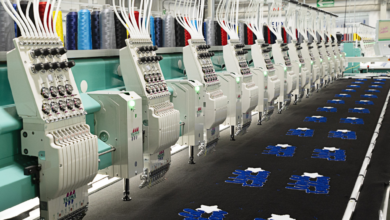Whether you’re an embroidery hobbyist or business owner, you’ve undoubtedly come across common machine errors, such as thread and needle breaks, registration issues, birdnesting, and more.
Luckily, several preventative measures out there will help reduce the amount of time you spend servicing your machine and increase business productivity.
In Part 1, we covered correcting and preventing thread breaks. Today is all about curbing those frustrating needle breaks.
Curb frustrating needle breaks
Ask any machine embroiderer, and they will tell you that needle breaks are part of the custom apparel business. However, as inevitable as needle breaks are, some tricks can help keep them to a minimum.
Speaking from experience, most needle breaks occur when embroidering unusual shaped surfaces, like hats and shoes, as well as tougher fabrics like leather and corduroy. When stitching these fabrics, you can lessen the possibility of a needle break by steaming your garments before stitching. The moisture softens the material, making it easier to penetrate.
Still, some fabrics require specific needles due to their structure or elasticity. For example, ballpoint needles often work best on thin, stretchy fabric but may break if used on thick material, like structured caps or jeans. In general, it’s good to have 75/11 sharp-point needles on hand or invest in titanium-coated needles, which are suitable for both tough materials and regular fabric.
Unusually shaped objects, like caps, can also cause what’s known as “flagging,” which occurs when there is too much space between the fabric and the needle plate. This causes the material to bounce as the needle penetrates the fabric, increasing the chances of the needle bending and missing the needle hole. If the needle misses the needle hole, it will strike the plate and break.
When embroidering caps, a good rule of thumb is to leave a small space between the sewing arm and cap driver so they do not touch or rub.
To further prevent needle breaks, it’s recommended that you check your machine’s hook timing at least once a year. Hook timing is the synchronization of the rotary hook with the needle. When your hook timing is off, you will experience multiple needle breaks.
One way to determine if your hook timing is causing needle breaks is to embroider on a flat surface rather than a cap. If you are still experiencing needle breaks, it’s most likely that your hook timing is off.
Learn more in Part 3: Birdnesting and Common Causes




